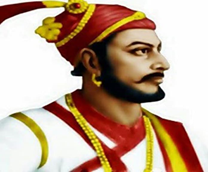

2nd March 2023 (7 Topics)
Context
Recently, Aurangabad has rechristened Chhatrapati Sambhaji Nagar in view to break the Mughal Legacy and promote the Kings from India highlighting their brave deeds.
History of Aurangabad:
- The city, originally known as Khadki, was founded by Malik Ambar (Anbar) in 1610.
- After the fall of the Nizam Shahi dynasty in 1633, the city came under the Mughal rule.
- It was later renamed Aurangabad after it became the headquarters of Aurangzeb during his viceroyalty over the Deccan.
- Aurangabad remained the headquarters of the independent Nizams (rulers), but it declined when the capital was moved to Hyderabad in Hyderabad princely state.
- With the dissolution of the princely state in 1948, Aurangabad was included in Hyderabad state in the newly independent India.
- It later became part of Bombay state (1956–60) before that state was divided into Maharashtra and Gujarat.
The Location:
- Aurangabad lies in the state of Maharashtra.
- Aurangabad District is located mainly in the Godavari Basin and its some part towards North West of Tapi River Basin.
- This District's general down level is towards the South and East and North West part comes in the Purna-Godavari river basin.
Highlights of the City:
- Aurangabad is known for its artistic silk fabrics, particularly shawls.
- The seat of Babasaheb Ambedkar Marathwada University (1958), is a prominent educational centre, and several branch colleges are located there.
- The city is also a popular tourist destination, mainly the result of its proximity to the Ellora and Ajanta cave temples, both of which were designated UNESCO World Heritage sites in 1983.
Chhatrapati Sambhaji Maharaj:
- Chhatrapati Sambhaji Maharaj is a Maratha warrior king who was the son of the iconic ruler Shivaji Maharaj
- The Maratha kingdom had been raised from scratch, built brick by brick by the sons of the Indian soil who wished to overthrow the powers that swore allegiance to descendants of Turkish, Persian and Mongol aggressors.
- Sambhaji Maharaj ruled for a short span of 9-10 years before his death at the hands of Aurangzeb but the Maratha subjects never forgot his sacrifice.
- Chhatrapati Sambhaji Maharaj was the eldest son of Chhatrapati Shivaji Maharaj - the great Maratha warrior king.
- Shivaji Maharaj belonged to the Bhonsle clan and was born on 19th February 1627.
- Shivaji Maharaj built the Hindawi Swaraj - the Self-rule of Indians as against that of the Mughals who identified themselves as descendants from Tamerlane of Mongolia and also of Turcik - Central Asian (Chagtai) bloodline.
Aurangzeb and links to the city:
- Aurangzeb was the third son of the emperor Shah Jahan and Mumtaz Mahal.
- He grew up as a serious-minded and devout youth, wedded to the Muslim orthodoxy of the day and free from the royal Mughal traits of sensuality and drunkenness.
- From 1636 Aurangzeb held a number of important appointments, in all of which he distinguished himself.
- He commanded troops against the Uzbeks and the Persians with distinction (1646–47) and, as viceroy of the Deccan provinces in two terms (1636–44, 1654–58), reduced the two Muslim Deccan kingdoms to near-subjection.
- Aurangzeb’s reign falls into two almost equal parts. In the first, which lasted until about 1680, he was a capable Muslim monarch of a mixed Hindu-Muslim empire and as such was generally disliked for his ruthlessness but feared and respected for his vigour and skill.
- During this period he was much occupied with safeguarding the northwest from Persians and Central Asian Turks and less so with the Maratha chief Shivaji, who twice plundered the great port of Surat (1664, 1670).
- Aurangzeb applied his great-grandfather Akbar’s recipe for conquest: defeat one’s enemies, reconcile them, and place them in imperial service.
- Thus, Shivaji was defeated, called to Agra for reconciliation (1666), and given an imperial rank.
- The plan broke down, however; Shivaji fled to the Deccan and died, in 1680, as the ruler of an independent Maratha kingdom.
- After about 1680, Aurangzeb’s reign underwent a change in both attitude and policy.
- The pious ruler of an Islamic state replaced the seasoned statesman of a mixed kingdom; Hindus became subordinates, not colleagues, and the Marathas, like the southern Muslim kingdoms, were marked for annexation rather than containment.
- The first overt sign of change was the reimposition of the jizya, or poll tax, on non-Muslims in 1679 (a tax that had been abolished by Akbar).
- This in turn was followed by a Rajput revolt in 1680–81, supported by Aurangzeb’s third son, Akbar. Hindus still served the empire, but no longer with enthusiasm.
- The Deccan kingdoms of Bijapur and Golconda were conquered in 1686–87, but the insecurity that followed precipitated a long-incipient economic crisis, which in turn was deepened by warfare with the Marathas.
|
Bibi ka maqbara:
|
More Articles


